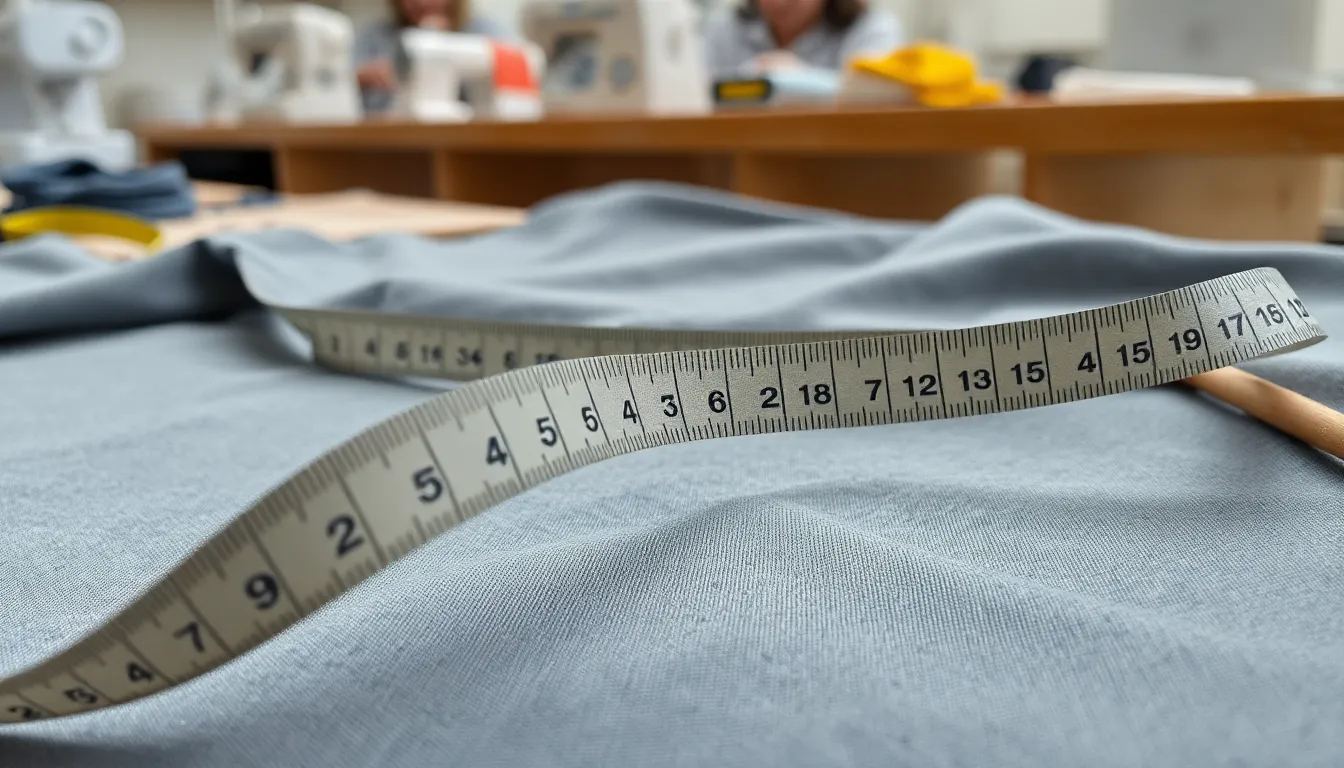Table of Contents
ToggleUnderstanding measurements is crucial in various fields, from science to everyday life. When it comes to converting units, many people often wonder how many centimeters are in a particular measurement. This simple yet essential knowledge can make a significant difference in tasks ranging from crafting to construction.
Centimeters are a common unit of length in the metric system, widely used around the world. Whether you’re trying to convert inches to centimeters for a DIY project or calculating distances in a recipe, knowing the conversion can save time and prevent mistakes. This article will break down the basics of centimeters and provide clear examples to help readers grasp this fundamental measurement easily.
Understanding Centimeters
Centimeters (cm) are a metric unit of length, equal to one-hundredth of a meter. They play a crucial role in fields such as medicine, engineering, and daily life tasks like cooking or home improvement.
Centimeters convert easily into other metric units. For instance:
- Millimeters: One centimeter equals 10 millimeters.
- Meters: One centimeter is 0.01 meters.
- Kilometers: One centimeter equals 0.00001 kilometers.
Conversion between centimeters and inches is also common. One centimeter is approximately 0.3937 inches. Therefore, for quick reference:
- 10 centimeters equals about 3.937 inches.
- 50 centimeters equals about 19.685 inches.
Centimeters serve as a standard measurement in many countries, highlighting their global usage. When measuring objects or distances, using centimeters ensures precision, especially in activities like building or tailoring.
For example, a standard paper size (A4) measures 21 centimeters wide and 29.7 centimeters tall. In fashion design, garment sizes often reference centimeters, allowing for accurate fits.
Understanding centimeters provides convenience in everyday life, contributing to effective communication and operational efficiency across various contexts.
Conversion Basics


Understanding the basics of centimeters and their conversions is essential for accurate measurements in various fields.
What Is a Centimeter?
A centimeter is a metric unit of length defined as one-hundredth of a meter. Commonly abbreviated as cm, it is widely utilized in countries that follow the metric system. Centimeters serve as a practical measurement in contexts like textiles, with standard sizing for clothing and fabric often expressed in this unit.
How to Convert to Centimeters
Converting to centimeters involves simple calculations based on the relationship between centimeters and other units. Below are some common conversions:
| From Unit | Conversion to Centimeters |
|---|---|
| Millimeters (mm) | Multiply by 0.1 |
| Meters (m) | Multiply by 100 |
| Kilometers (km) | Multiply by 100,000 |
| Inches | Multiply by 2.54 |
| Feet | Multiply by 30.48 |
To convert any measurement to centimeters, determine the value in the original unit and apply the corresponding multiplier from the table. This straightforward approach ensures accurate and consistent results across various applications.
Common Conversions
Understanding how to convert centimeters to other measurements is essential for various applications. Below are key conversions of centimeters to feet, inches, and meters.
Centimeters in Feet
To convert centimeters to feet, use the conversion factor of 1 foot equal to 30.48 centimeters. This means:
- 1 cm equals 0.0328 feet
- 100 cm equals 3.2808 feet
- 200 cm equals 6.5617 feet
This conversion is useful in fields such as construction and design, where spatial measurements often require feet instead of centimeters.
Centimeters in Inches
To convert centimeters to inches, utilize the factor of 1 inch equal to 2.54 centimeters. This translates to:
- 1 cm equals 0.3937 inches
- 10 cm equals 3.937 inches
- 50 cm equals 19.685 inches
This conversion finds relevance in tailoring and graphic design, where measurements are frequently expressed in inches.
Centimeters in Meters
Centimeter to meter conversion is straightforward since 1 meter equals 100 centimeters. Thus:
- 1 cm equals 0.01 meters
- 100 cm equals 1 meter
- 250 cm equals 2.5 meters
This conversion is foundational in scientific contexts, where precision in metric measurements is crucial.
Practical Applications
Centimeters play a vital role in numerous everyday tasks and professional fields. Their precise measurement is essential for activities ranging from crafting to engineering.
Everyday Use Cases
Centimeters are commonly used in home improvement projects, ensuring accurate dimensions for furniture and fixtures. For cooking, precision in recipes often relies on measurements in centimeters, especially when scaling ingredients. In tailoring, clothing sizes typically reference centimeters, allowing for better fit and comfort. Additionally, sports equipment specifications, such as racket sizes and shoe lengths, often involve centimeters, ensuring users select the correct items for optimal performance.
Importance in Various Fields
In medicine, centimeters are crucial for measuring body dimensions, such as height and wound size, allowing healthcare professionals to provide accurate treatments. The engineering sector frequently utilizes centimeters in design and construction, ensuring structures meet safety standards. In education, centimeters simplify the teaching of measurements and geometry, helping students grasp fundamental concepts. Furthermore, in scientific research, accurate data collection in centimeters contributes to reliable analysis and findings. Overall, the consistency provided by centimeters facilitates effective communication and collaboration across diverse industries.







